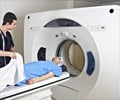Researchers have discovered for the first time that passive smoking or second-hand smoking causes structural damage to the lungs.
Researchers have discovered for the first time that passive smoking or second-hand smoking causes structural damage to the lungs.
The discovery was made using a novel MRI technique by researchers at the University of Virginia School of Medicine in Charlottesville and The Children’s Hospital of Philadelphia in Pennsylvania under the leadership of Dr. Chengbo Wang.“It’s long been hypothesized that prolonged exposure to second-hand smoke may cause physical damage to the lungs, but previous methods of analyzing lung changes were not sensitive enough to detect it,” said Dr. Wang.
Second-hand smoke has emerged as a public health threat in recent years. It has been classified as a carcinogen by the Environmental Protection Agency and has been linked to heart disease, lung cancer and a number of respiratory ailments, including asthma and chronic bronchitis.
Children are particularly susceptible to the harmful effects of second-hand smoke.
Dr. Wang and colleagues used long-time-scale, global helium-3 diffusion magnetic resonance imaging (MRI) to study the lungs of 43 volunteers, including seven current and former smokers and 36 non-smokers, 18 of whom had a high level of exposure to second-hand smoke.
Helium-3 diffusion MRI differs from conventional MRI in that the patient inhales a specially prepared helium gas prior to imaging, and the scanner is adjusted to collect images showing this helium gas in tissue. MR measures how far the helium atoms move, or diffuse, inside the lungs during a specific time period — 1.5 seconds in this study.
Advertisement
“With this technique, we are able to assess lung structure on a microscopic level,” said Dr. Wang.
Advertisement
An increased ADC value indicates that the helium atoms were able to travel farther during the measurement time. Fifty-seven percent of the smokers and 33 percent of the non-smokers with high exposure to second-hand smoke had ADC values greater than 0.024, suggesting that early lung damage was present.
In addition, 14 percent of smokers, 67 percent of high-exposure non-smokers, and 39 percent of low-exposure non-smokers had ADC values below 0.0185. Relatively low ADC values in adults are a possible indication of a developing respiratory problem, such as chronic bronchitis or asthma.
“These findings suggest that breathing second-hand smoke can injure your lungs,” Dr. Wang said.
He added: “Since legislation to limit public exposure to second-hand smoke is still being considered in many states, we hope that our work can be used to add momentum to the drive to pass such legislation.”
The study was presented at the annual meeting of the Radiological Society of North America (RSNA).
Source-ANI
SRM/P











